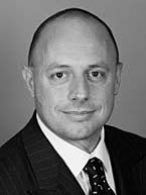An ankle sprain is a common injury to the ankle. “Sprain” implies ligament damage, but sometimes other structures can be injured. A lateral ligament sprain is the most common ankle injury.
Anatomy
Lateral ligament: This ligament is attached to the outside (lateral) aspect of the ankle joint. It has 3 parts.

Syndesmosis: This ligament complex binds together the lower aspect of the tibia and fibula bones.

Deltoid Ligament: This attaches on the medial (inner) side of the ankle and is less commonly injured.

The Injury
The way in which the ankle was injured gives a clue as to what has been damaged. The lateral ligament can get sprained or torn when the ankle rolls in (“inverts”), but other structures can get injured in this way, too.

Other important questions your doctor may ask about are…
- were you able to continue walking/playing sport?
- was there swelling?
- where in the ankle the pain is?
- is there clicking or locking of the ankle joint?
- what treatment you have had?
If there is any concern that it may be more than an ankle sprain, your doctor may advise further tests, starting off with an x-ray.
In a lateral ligament sprain or tear, pain and swelling is located more on the outside of the ankle.
Treatment
Initial management of a lateral ligament ankle sprain, as with any soft tissue injury, is:
RICE:
Rest the injured area,
Ice to the injury every 2 hours for 20 minutes,
Compression by bandage and
Elevation of the ankle.
All of these help to minimise swelling and to prevent further damage to the already injured tissues.
A lateral ligament sprain or tear is best treated with an ankle rehabilitation program given by your doctor or physiotherapist. For a low grade sprain, this may not be needed for long, but for a full tear, this may take up to 6 weeks.
These rehabilitation exercises involve restoring the range of movement in the ankle and preventing stiffness, strengthening the muscles around the ankle, especially the peroneal muscles, stretching the calf muscles and retraining the ability of the ankle to keep balanced. Sometimes your doctor may recommend anti-inflammatory tablets and/or gel if there is ongoing inflammation.

Once your ankle is pain free and back to full movement, strength and balance sense, training for sport can be recommenced. Some people can benefit from wearing an ankle brace or have their ankle taped for sport. These have been shown to help reduce re-injury to the ankle.
About 85% of ankle sprains will recover following a proper rehabilitation program. Those injuries that don’t resolve need further investigation and may require an operation.
Other Injuries
Sometimes an ankle doesn’t get better after an injury despite adequate rest. This might be due to poor ankle rehabilitation or just ongoing inflammation or instability.
Occasionally it is because the injury is actually a bone or cartilage fracture, sprain or rupture of a different ligament, or tendon rupture or dislocation. In these cases, the treatment may be different, so an investigation such as an x-ray of the ankle or foot or MRI scan may be required.
Summary
- Lateral ligament tears are common and best treated with RICE and rehab.
- Consider the need for further tests if the ankle doesn’t get better despite rehab.












